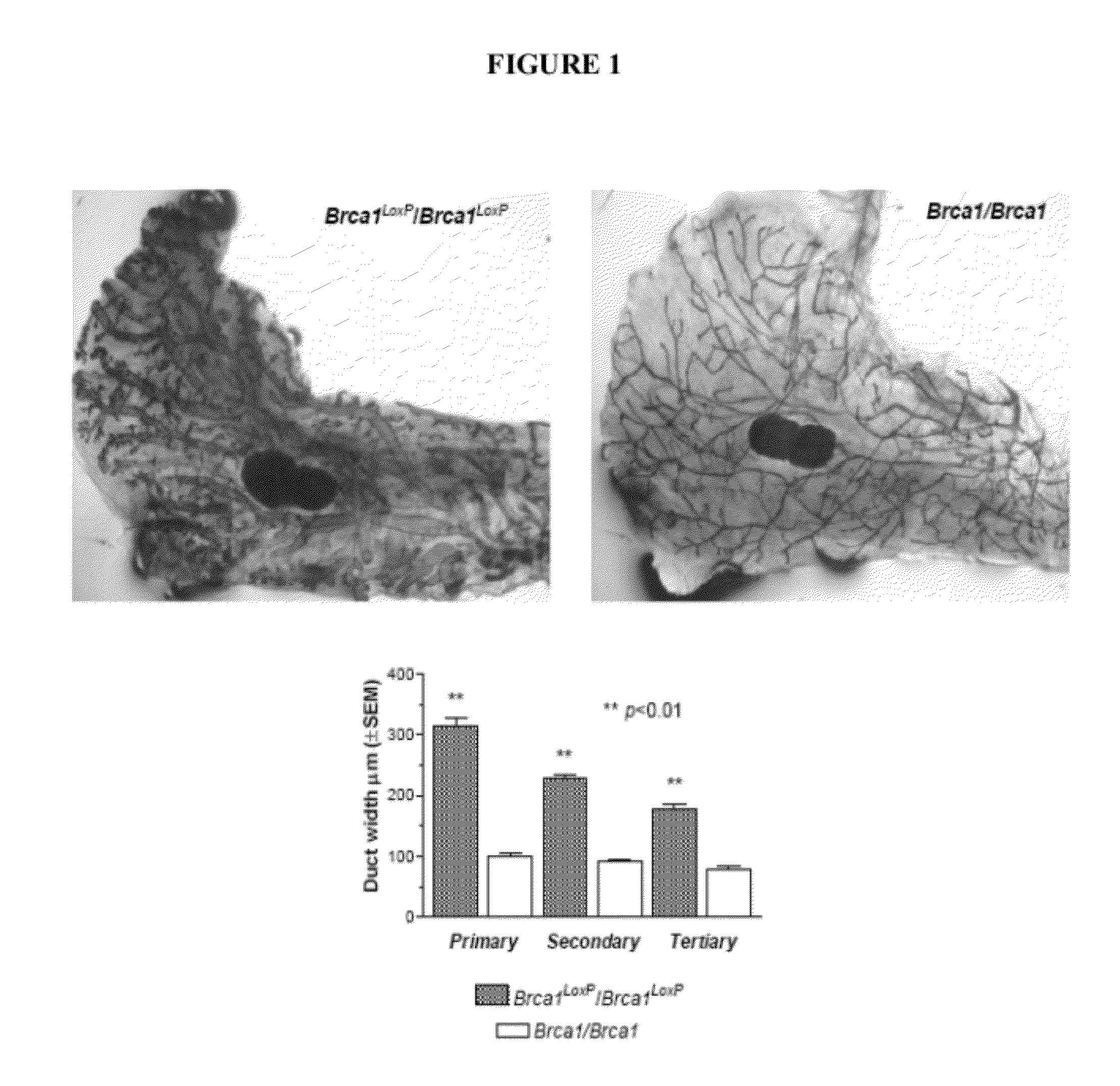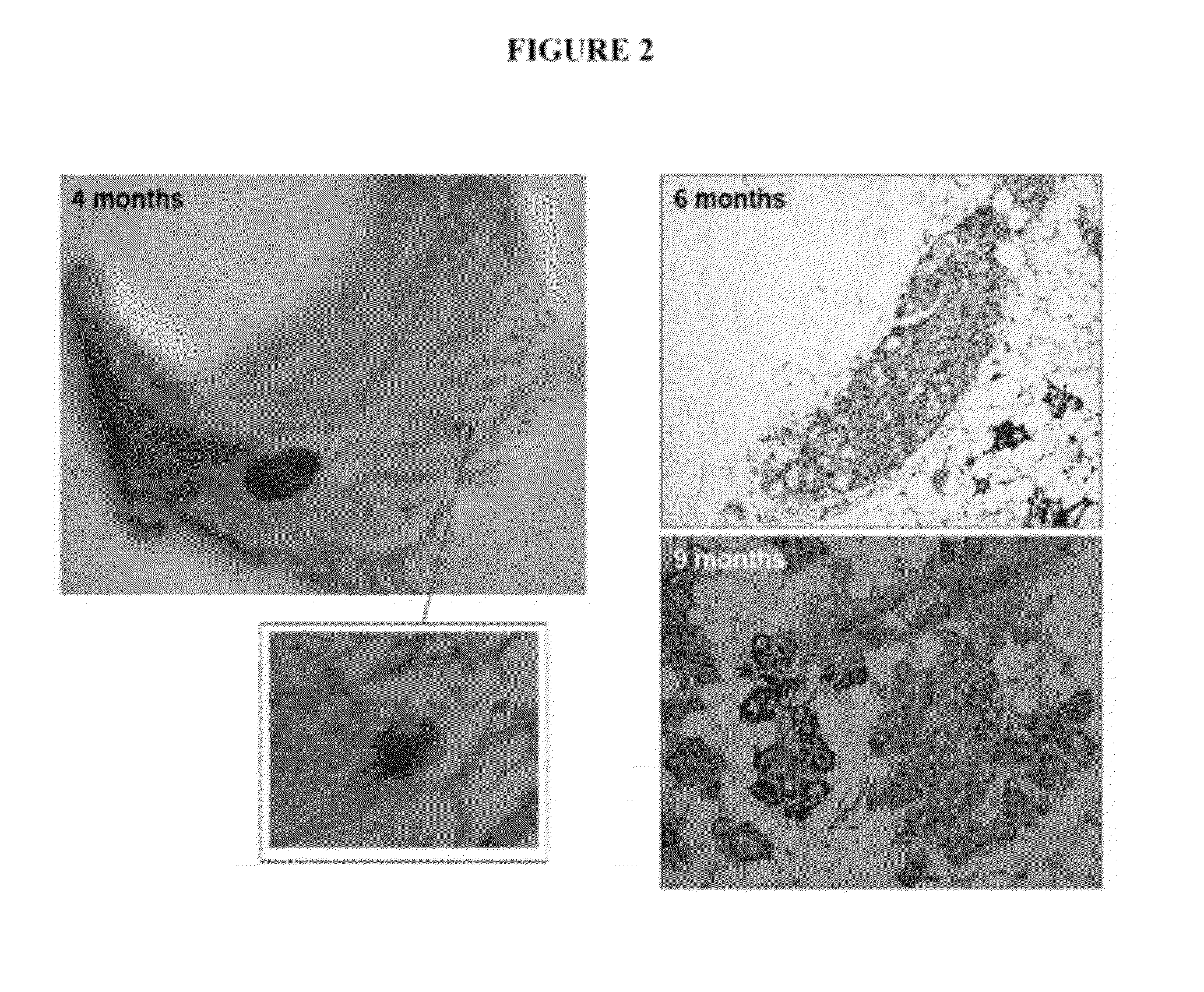Treatment of non-proliferative cystic disease of the breast
a cystic disease and breast cancer technology, applied in the field of breast cancer non-proliferative cystic disease of the uterus and ovary, can solve the problems of increasing the cancer risk of brca1 disease, tamoxifen treatment, and certain hyperplastic lesions of the breast, so as to reduce the number and/or severity of morphological features, reduce symptoms, and reduce the number of morphological features
- Summary
- Abstract
- Description
- Claims
- Application Information
AI Technical Summary
Benefits of technology
Problems solved by technology
Method used
Image
Examples
example 1
[0170]The present inventor has made the surprising discovery that mice comprising loxP sites flanking exon 11 of the BRCA1 gene (formally known as Brca1loxP / loxP, but also referred to herein as LoxP mice) display profoundly abnormal mammary gland development at an early age. LoxP mice were acquired from the National Institutes of Health Mouse Repository. The strain is Stock Brcaltm2Cxd and the Strain code is 01XC8. Mice were maintained in accordance with the standards established by the Association for Assessment and Accreditation of Laboratory Animal Care (AAALAC) (New York University). Animals so obtained were bred and assessed as described herein and LoxP mice exhibit abnormal mammary gland development typified by the appearance of dilated ducts and areas of dysplasia and hyperplasia in the mammary glands by the age of four months.
[0171]By way of background, exon 11 of BRCA1 accounts for 60% of the function of the entire gene (Xu et al. Nature Genetics 1999, 22:37-43). BRCA1 is a...
PUM
| Property | Measurement | Unit |
|---|---|---|
| molecular weight | aaaaa | aaaaa |
| width | aaaaa | aaaaa |
| affinity | aaaaa | aaaaa |
Abstract
Description
Claims
Application Information
 Login to View More
Login to View More - R&D
- Intellectual Property
- Life Sciences
- Materials
- Tech Scout
- Unparalleled Data Quality
- Higher Quality Content
- 60% Fewer Hallucinations
Browse by: Latest US Patents, China's latest patents, Technical Efficacy Thesaurus, Application Domain, Technology Topic, Popular Technical Reports.
© 2025 PatSnap. All rights reserved.Legal|Privacy policy|Modern Slavery Act Transparency Statement|Sitemap|About US| Contact US: help@patsnap.com



